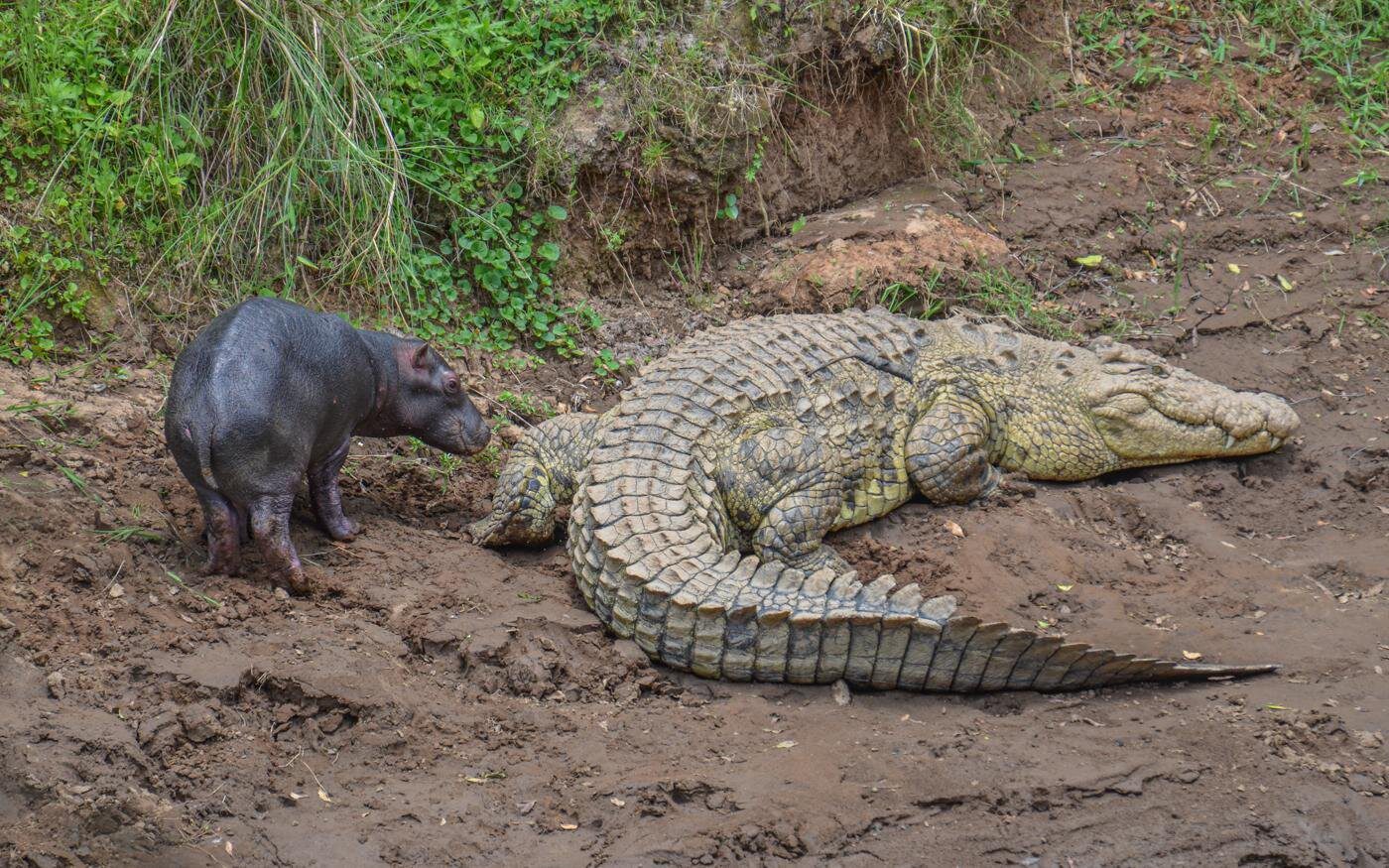The Nile crocodile and the hippopotamus are two ancient rivals in Africa that have captivated people for centuries. The Nile crocodile is a powerful reptile known for its size, armor, and sharp teeth. The hippopotamus is a massive mammal with a barrel-shaped body and sharp incisors. Despite their differences, they share similarities in being exceptional swimmers, territorial, and aggressive when threatened. Battles for dominance between the two often occur, with crocodiles having an advantage in the water and hippos exhibiting immense strength on land. These encounters remind us of the raw power in the African wilderness, allowing for a continued fascination with these creatures.
The Nile Crocodile vs. the Hippopotamus: Africa’s Ancient Showdown
Introduction
When it comes to the fierce creatures of Africa, two ancient rivals stand out – the Nile crocodile and the hippopotamus. These massive animals have captured the imagination of people for centuries. In this article, we will delve into the world of these formidable creatures, exploring their similarities and differences, and their epic battles for dominance in the African wilderness.
The Nile Crocodile
The Nile crocodile (Crocodylus niloticus) is one of the largest and most powerful reptiles in the world. Found throughout sub-Saharan Africa, it is a formidable predator both in water and on land. With its elongated body, armored skin, and powerful jaws filled with sharp teeth, the Nile crocodile is a force to be reckoned with. Adult males can grow up to 6 meters in length and weigh over a ton.
The Hippopotamus
The hippopotamus (Hippopotamus amphibius) is an iconic African mammal known for its massive size, barrel-shaped body, and large mouth filled with sharp incisors. Despite their herbivorous nature, hippos are responsible for more human deaths in Africa than any other large animal. Adult males can weigh up to 3,500 kilograms and reach a length of 5 meters, making them the third-largest land mammal on Earth.
Similarities
Despite being distinct species, the Nile crocodile and the hippopotamus share several similarities. Firstly, both are exceptional swimmers, spending a significant amount of time in water. They have powerful muscular bodies adapted for efficient movement in aquatic environments. Additionally, both species are territorial and are known to defend their territories fiercely, especially during the breeding season. Furthermore, both crocodiles and hippos are known for their aggressive behavior when threatened or provoked.
Differences
While the Nile crocodile and the hippopotamus share similarities, they are also vastly different creatures. Firstly, they belong to different taxonomic orders, with the crocodile being a reptile and the hippopotamus being a mammal. Naturally, this leads to differences in anatomy, behavior, and reproduction. Secondly, while both are apex predators, the Nile crocodile primarily feeds on fish, amphibians, and reptiles, while the hippopotamus is a herbivore, grazing on grass and other vegetation.
Battles for Dominance
The encounters between Nile crocodiles and hippos can often result in brutal battles for dominance. Both animals are highly territorial and will fiercely defend their territories. These clashes usually occur when a crocodile ventures onto a hippopotamus’ territory or when a crocodile attempts to prey on a hippo, especially if there are juveniles involved. While crocodiles have a significant advantage in the water due to their speed and powerful bite force, hippos exhibit immense strength on land and can inflict severe injuries with their massive incisors.
Conclusion
In conclusion, the Nile crocodile and the hippopotamus are two iconic African animals that have captivated our imagination for centuries. While they share similarities in their aquatic lifestyles and territorial behaviors, they also have distinct differences in their anatomy, diet, and reproduction. The battles for dominance between these ancient rivals remind us of the raw, primal power that exists in the African wilderness, ensuring a continued fascination with these magnificent creatures for generations to come.
